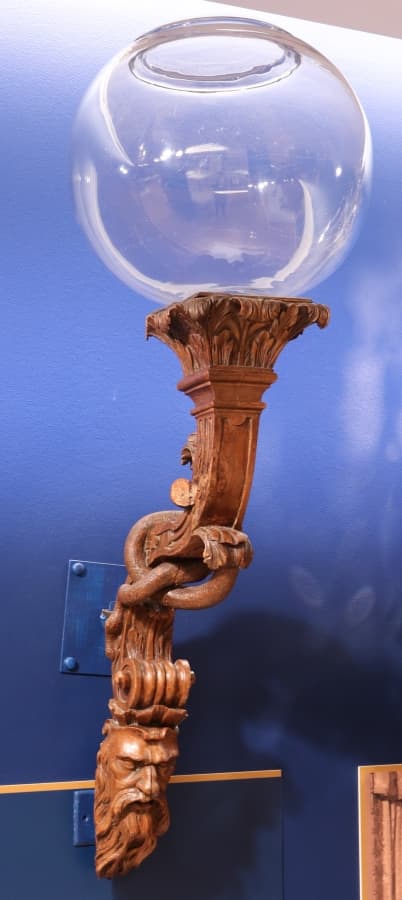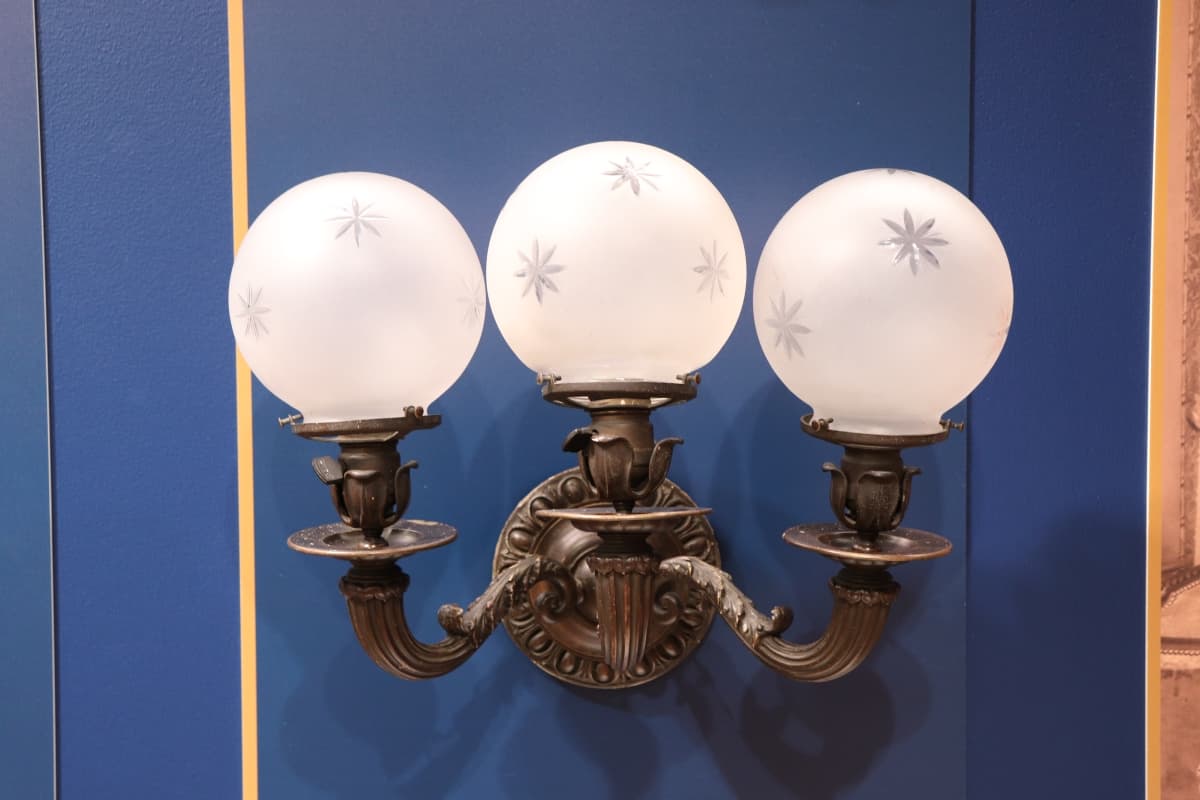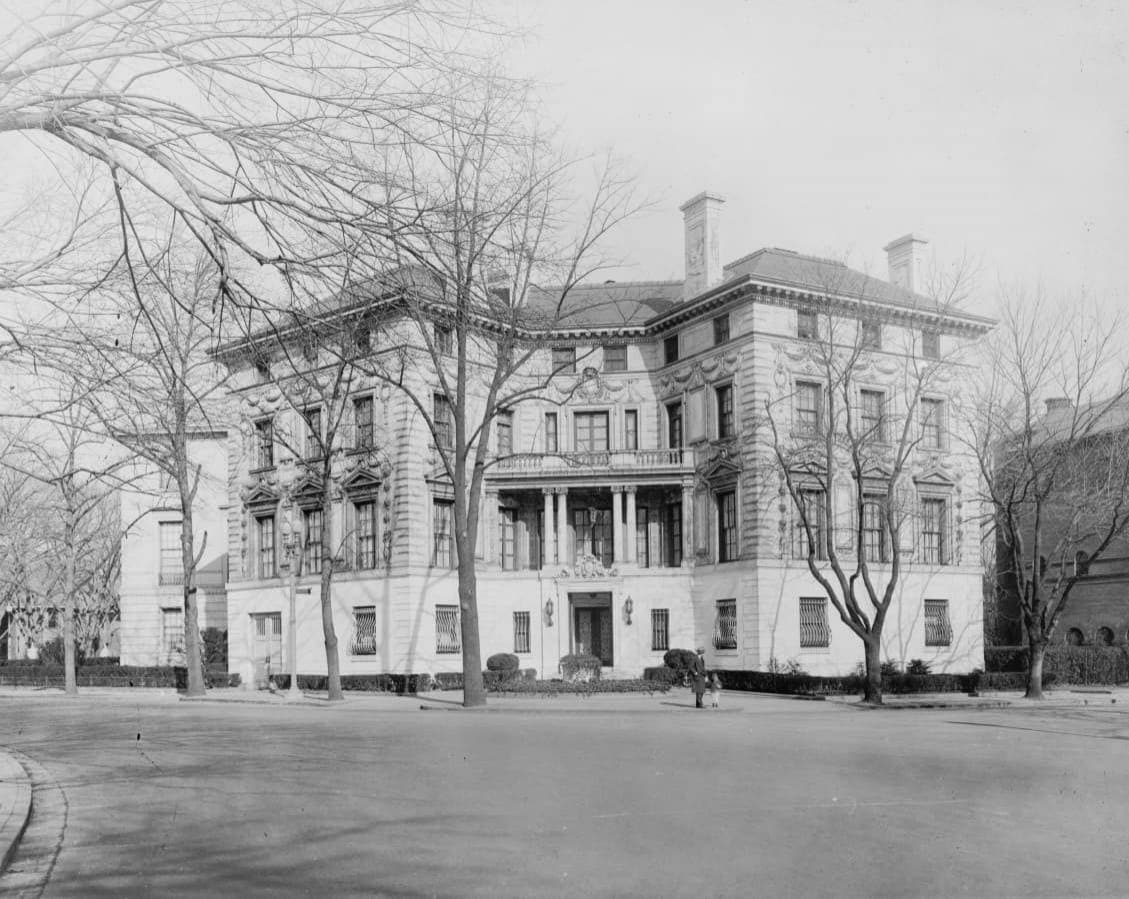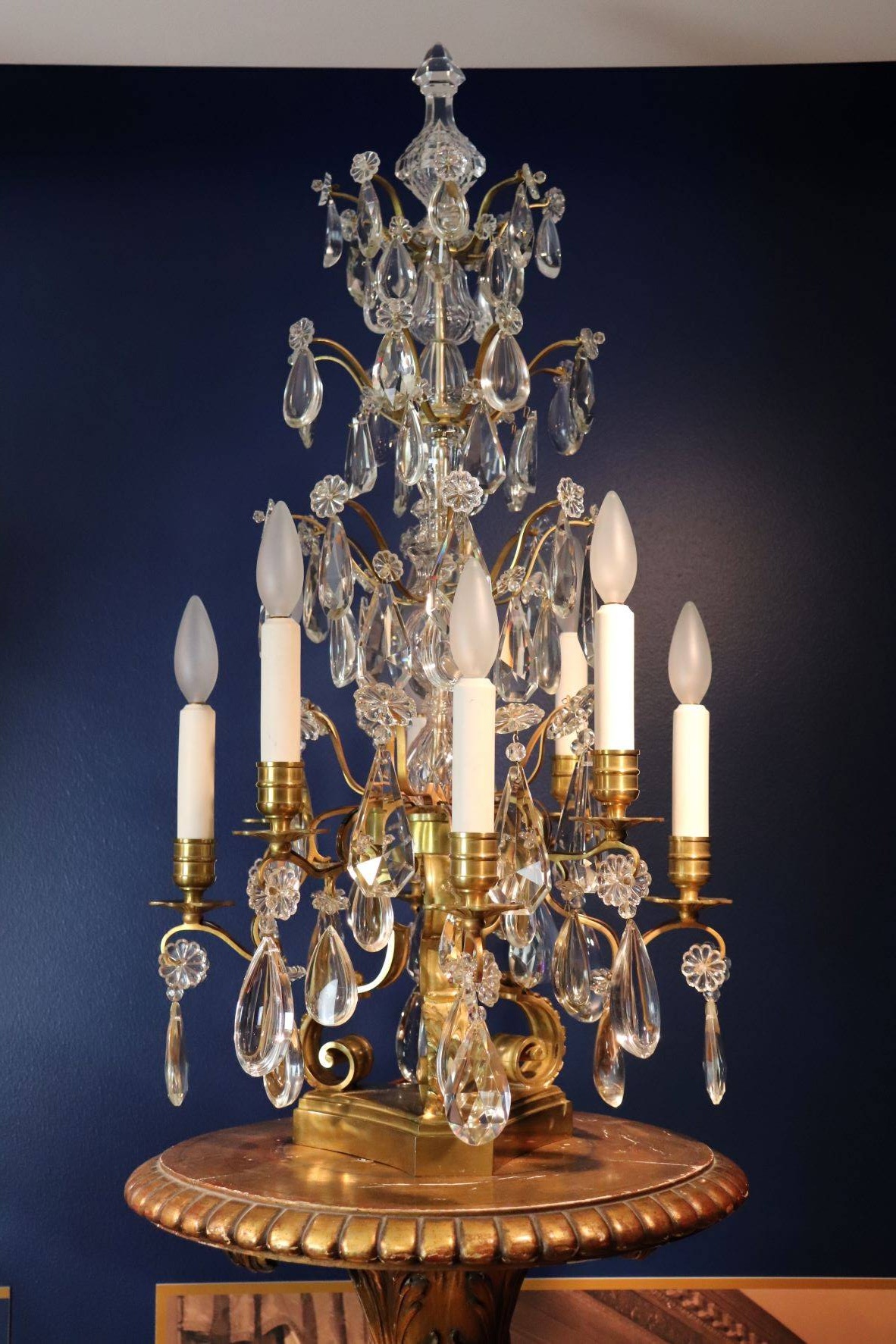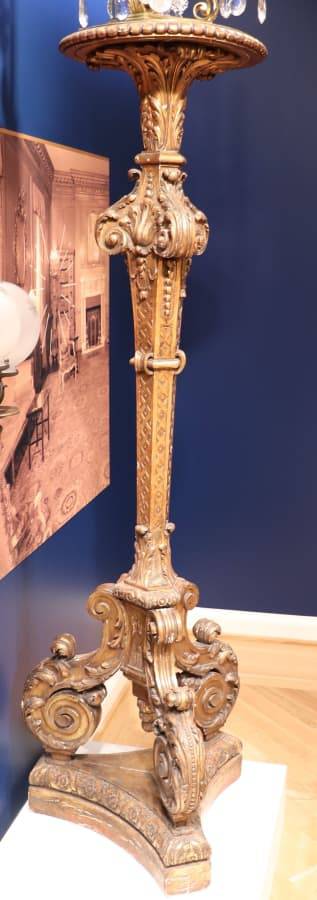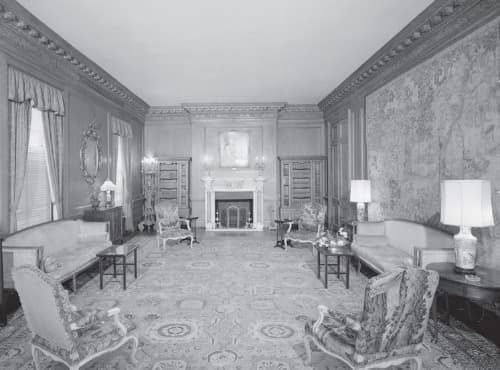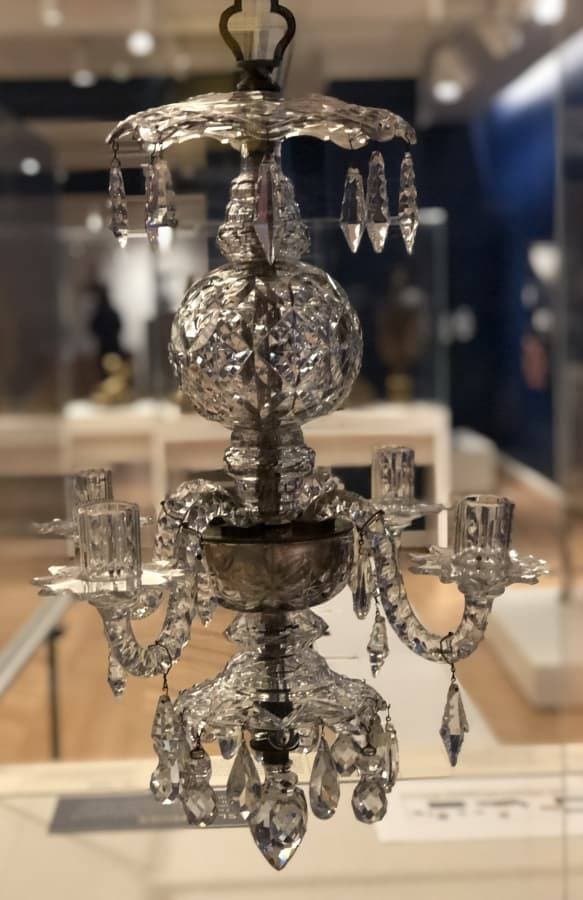Patterson House
In 1901, Robert and Elinor Patterson hired their favorite architect and decorator Stanford White of McKim, Mead, and White to design a new house for them at 15 Dupont Circle. White created history-inspired interiors for the Pattersons and subcontracted the work to various decorating firms. He hired his friend Edward Caldwell to supply most of the lighting in the house. Elinor and later her daughter Cissy continued using the firm to make lighting for subsequent redecorations, especially when President and First Lady Coolidge lived there in 1927, while the White House was undergoing renovations.
ROBERT WILSON PATTERSON CISSY PATTERSON
STAIRCASE LIGHT
NEW YORK CITY, NEW YORK AND ITALY, FITTINGS 1902-1903, BRACKET 19TH CENTURY
NEW YORK CITY, NEW YORK, 1902
PINE, IRON, GLASS & BRASS
LOAN COURTESY OF A PRIVATE COLLECTION
Stanford White embraced electricity and its potential for application to all sorts of fixtures. He often asked Caldwell to modify antique items for electricity. White provided this bracket to Caldwell who made the glass globe and fitted it with a small electric socket.
SCONCE
SMITHSONIAN LIBRARIES, COOPER HEWITT, SMITHSONIAN DESIGN MUSEUM
NEW YORK CITY, NEW YORK, 1902-1903
BRONZE
LOAN COURTESY OF A PRIVATE COLLECTION
Stanford White ordered these classically inspired sconces for the entrance hall. Though Elinor Patterson said she preferred gas-powered fixtures, White eventually persuaded her to wire the entire house for electricity with gas as backup. Caldwell made these sconces especially for electricity and frosted glass globes would have originally hidden the bulbs.
PATTERSON HOUSE, DUPONT CIRCLE
NATIONAL PHOTO COMPANY
WASHINGTON, D.C., 1920s
COURTESY OF LIBRARY OF CONGRESS PRINTS & PHOTOGRAPHS DIVISION
GIRANDOLE
EDWARD F. CALDWELL & CO.
NEW YORK CITY, NEW YORK, 1920-1930
GILDED BRONZE WITH CUT GLASS
LOAN COURTESY OF A PRIVATE COLLECTION
Caldwell excelled in developing clever ways to conceal switches. This girandole or candelabra originally illuminated the library. Elinor probably commissioned this during the 1920s redecoration. A small knob finial located at the center of the base turns the fixture on and off.
TORCHIERE
FRANCE, 1860-1900
GILDED WOOD
LOAN COURTESY OF A PRIVATE COLLECTION
Though not part of Patterson House’s original furnishings, this torchiere is the type of item the girandole would have been placed upon. It copies the original late 17th-century example in the Abundance Room at the Palace of Versailles.
PATTERSON HOUSE LIBRARY
J. ALEXANDER, CFA PHOTOGRAPHER
WASHINGTON, D.C., 1971
COURTESY OF LIBRARY OF CONGRESS PRINTS & PHOTOGRAPHS DIVISION, HISTORIC AMERICAN BUILDINGS SURVEY
The girandole and its original torchiere can be seen in the background to the left of the fireplace. In the 1950s, the Patterson House became home to the Washington Club. Surveyors for the Historic American Buildings Survey took this photo when recording details of the house.
ATTRIBUTED TO EDWARD F. CALDWELL & CO.
NEW YORK CITY, NEW YORK,ASSEMBLED FROM 18TH CENTURY PARTS IN THE 1920S
CUT GLASS BRASS & IRON
LOAN COURTESY OF A PRIVATE COLLECTION
This chandelier was likely made for a sitting room on the third floor. E. F. Caldwell & Co. began making 18th-century style cut glass fixtures in the 1920s. Primarily of English cut glass, this object probably started out as a candelabra. Caldwell used antique glass from both England and Czechoslovakia to make all sorts of lighting. On buying trips to Europe, Victor von Lossberg purchased glass parts that could be made into lamps.

